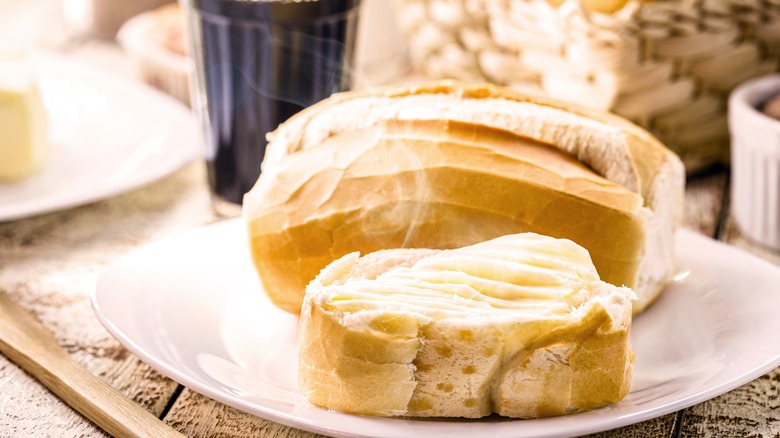Why Jet Tila Is A Big Fan Of Cultured Butter
In addition to hosting Food Network's "Ready Jet Cook," Chef Jet Tila has been seen on "Iron Chef America," "Anthony Bourdain: Parts Unknown," "Chopped," "Beat Bobby Flay," "Guy's Grocery Games," and more. He's something of a food story teller, incorporating creativity and artistic prowess into more traditional recipes. Having attended Le Cordon Bleu, a solid background in French cuisine enhanced Tila's own culinary proclivities, and his experiences at the California Sushi Academy helped Tila establish a name for himself not only in L.A., but throughout the world.
When a celebrity chef such as Tila offers simple tips to help at-home cooks made food taste better, we're all ears, and Tila has an easy swap that any aspiring chef can use for tonight's dinner: butter.
Most bakers and cooks know that butter makes everything taste better. From flaky crusts to fluffy biscuits, buttery proteins to gooey cookies, the right proportions of butter can make or break a standard recipe. But for Tila, a certain kind of butter can help recipes really stand out, and his preferred ingredient isn't difficult to work with.
A simple, luxurious swap
Salted cultured butter is a creamier ingredient than traditional butter, and the taste offers a hint of tang that is similar to the flavors found in buttermilk and fresh yogurt. Typical butter is made out of fresh cream that is repeatedly churned until it becomes solid, but cultured butter takes a bit more effort to produce. Bacterial cultures are first mixed into pasteurized cream, and the cream is left to thicken and ferment. The resulting taste is tangier, and as Tila explained to Food & Wine, fermentation lends a cheesier flavor to the butter's final taste. When salt is added, the unique flavor becomes even more pronounced, creating a seemingly luxurious addition that can be spooned into all of your favorite recipes.
The length of time cultured butter is left to ferment can range. You can make cultured butter at home by setting aside heavy whipping cream and cultured buttermilk to ferment for nearly two days. After some straining and cooling, you'll have yourself a creamy dairy product that can be slathered onto bread or mixed into curry cooking on the stove. Including ingredients like garlic, herbs, and spices into your homemade butter can result in an even more enhanced taste for your intended recipes, and you'll be thanking Tila for his culinary suggestion.

